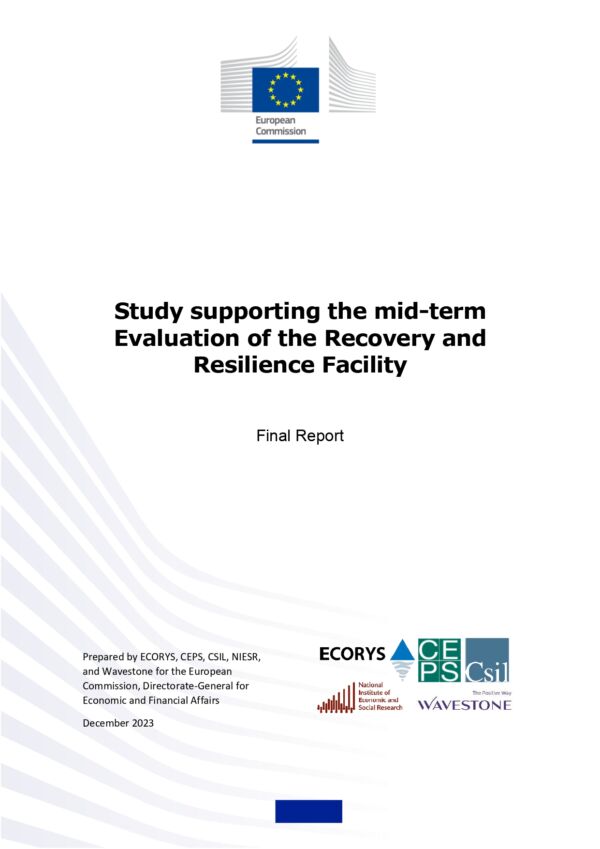The Recovery and Resilience Facility (RRF) is the cornerstone of the EU’s plan to emerge stronger and more resilient from the Covid-19 crisis (NextGenerationEU) and address the socio-economic challenges caused by Russia’s invasion of Ukraine (via implementing the REPowerEU plan). To address these broad and challenging objectives, the RRF provides significant financing on a scale that could not be attained at Member State-level only – up to EUR 723.8 billion in total, comprising EUR 385.8 billion in loans, EUR 338 billion in grants, and additional resources from REPowerEU.
This study aims to provide an objective and independent assessment of the RRF against the criteria of effectiveness, efficiency, relevance, coherence, and EU added value. It will feed into the European Commission’s mid-term evaluation report. Moreover, the study also provides useful background evidence and lessons learned for discussions on possible future performance-based instruments in the post-2027 Multiannual Financial Framework (MFF).
The study’s general conclusion is that the RRF provided a macro-relevant common and synchronised EU response to support Member States’ recovery after the Covid-19 pandemic and the energy crisis. The evaluation findings show that the RRF has triggered the implementation of major and long-awaited reforms across a wide range of policy areas. It also increased EU GDP, lowered EU unemployment and helped avoid financial fragmentation.
You can also view the three accompanying case studies below:
Case study on social and territorial cohesion











